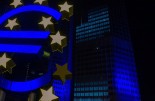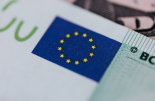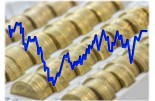Monex Europe: ECB’s hawkish comments let EUR/USD rally up

Simon Harvey, Head of FX Analysis at Monex Europe, comments on yesterday's ECB meeting:
'The ECB raised all three of its interest rates by 50 basis points, with the benchmark deposit rate now sitting at 2%. This outcome was largely expected by markets given that the doves among the Governing Council have recently grown in voice. However, with some prominent members such as Isabel Schnabel advocating for higher rates to guard against a further de-anchoring in inflation expectations, the doves had to make some concessions to get the slowdown in the hiking cycle that they desired. The main concession came in the form of extremely hawkish forward guidance. Initially, this manifested itself within the rate statement, which now includes reference that “the Governing Council judges that interest rates will still have to rise significantly at a steady pace”. However, this was then referred to and doubled down by ECB President Christine Lagarde within the press conference as she stressed that “significantly” and “steady” means rates should rise by 50bps for a sustained period of time. Markets initially took this within their stride, pulling their expectations of the terminal rate of 3% forward from Q4 2023 to the first half of next year, but President Lagarde then went one step further by explicitly stating that the expected terminal rate of 3% doesn’t currently allow a return of inflation to 2% in a timely manner. While money markets remain hesitant to read too much into this as pricing for September’s meeting has topped out at 3.07%, the comments by Lagarde prompted further gains in the euro. Following the hawkish comments, EURUSD rallied up to 1.0738, its highest rate since June 9th.
The hawkish guidance wasn’t the only surprise within the rate statement. While the central bank was expected to set out “key principles” on how it would wind down its Asset Purchase Programme’s portfolio, most analysts anticipated them to be vague in nature and delay the release of a formal quantitative tightening programme until Q1. However, the ECB exceeded expectations yet again and outlined that it would reduce its APP holdings from March 2023 onwards, with EUR15bn on average rolling off per month up until the end of Q2.
The ECB’s hawkish status was confirmed by the latest set of Eurosystem staff projections. Both headline and core inflation estimates have been revised up across the entirety of the forecast horizon, even though Eurosystem staff now officially see lower growth in 2023 and a shallow recession over 22Q4 and 23Q1. The ECB’s 2023 core inflation rate and 2025 headline rate also stood out initially. At 4.2%, the ECB now projects core inflation to be more than double the target for the headline rate over the coming year, meanwhile it still anticipates that inflation would remain above target in the upcoming three years. Based on these projections, President Lagarde’s hawkish commentary today is understandable. However, both the hawkish commentary and the deteriorating projections raise the question of why the Governing Council couldn’t find a consensus around another 75bp hike. If it is the ECB’s ultimate desire to tighten financial conditions considerably to avoid taking rates above 3% in 2023, this will require unanimous buy-in from all members. While it sounds easy on paper, it is in fact a highly risky strategy for a formidably fractious governing council to undertake. Additionally, if the tighter financial conditions within markets fail to bring inflation lower by March’s staff projections, the ECB could find itself struggling to downshift to 25bp hikes come Q2. Let’s not forget only in September Lagarde stated that the ECB’s hiking cycle would continue for more than two meetings but less than five – under this previous guidance, the hiking cycle would finish in March 2023, just two meetings from now.
While higher implied interest rates are weighing on some currencies as they are seen as deepening recessions, the faster implied hiking cycle from the ECB is proving to be somewhat supportive for the euro for two reasons. Firstly, with eurozone interest rates much lower than peer’s, there remains a positive “catch up” effect for the euro as rate spreads narrow. Secondly, the more hawkish tone from the ECB comes on the back of better than expected growth data, suggesting the economy can handle more restrictive policy than seen back at the last meeting in October.'









